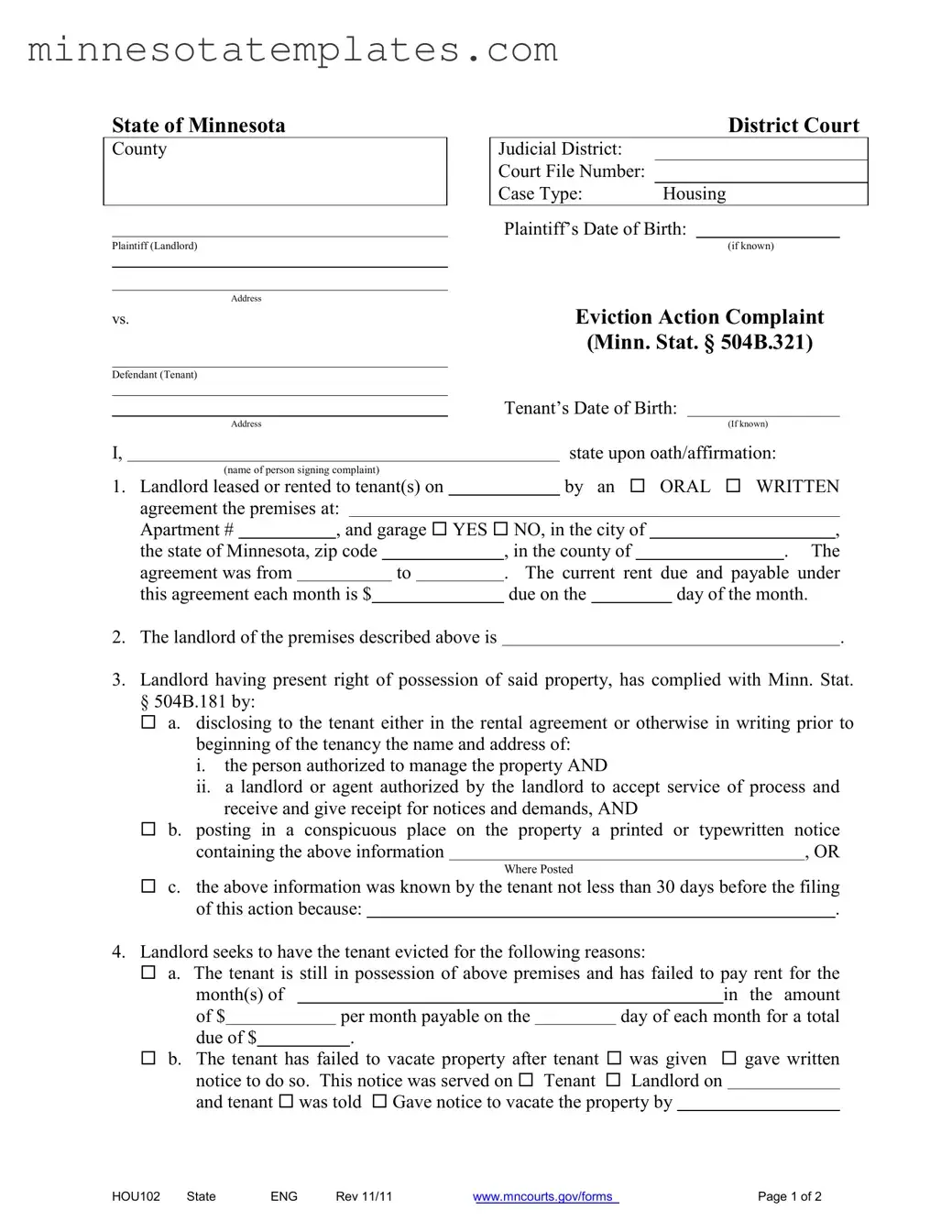The Minnesota Hou102 form is a crucial document used in eviction proceedings, specifically tailored for landlords seeking to reclaim possession of their rental properties. It serves as a formal complaint filed in the district court, outlining the essential details of the landlord-tenant relationship. Key components of the form include the identification of both the plaintiff (landlord) and defendant (tenant), the specifics of the rental agreement, and the reasons for eviction. Landlords must provide information such as the rental property address, the amount of rent due, and any breaches of the rental agreement by the tenant. Additionally, the form requires verification that the tenant is not currently serving in the military, ensuring compliance with federal protections. The completion of the Hou102 form is not only a procedural necessity but also a critical step in initiating legal action, making it essential for landlords to understand its requirements and implications.
